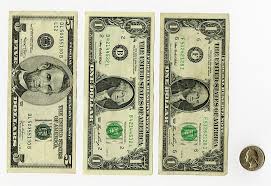Minimum Wage Supporters Tout Misleading Jobs Figures
< < Go Back
Minimum wage advocates are touting new figures from the Department of Labor which indicates that 12 of the 13 states that increased their minimum wages during the first half of 2014 saw higher job growth than the states that did not increase their minimum wages. According to the Labor Department, those minimum wage states saw 0.85 percent growth, while the other states had 0.61 percent growth. But does that mean that raising the minimum wage creates job growth? Hardly. Erin Shannon of the Washington Policy Center explains what’s going on behind the numbers in a new study.
The fact that some states that raised their minimum wages saw increased job growth is no indication that the wage hikes caused that growth. Nearly every U.S. state has seen job growth during the first half of 2014, and most of the states with the highest job growth actually did not increase their minimum wages.
According to Shannon:
– Of the top three states for job growth (North Dakota, Nevada and Utah), none increased their minimum wages in 2014, and North Dakota does not have a minimum wage at all. Two of the bottom three states for growth (Vermont and New Jersey), however, did increase their minimum wages.
– Of the top 20 states for job growth, just five increased their minimum wages.
Seventeen states had unemployment rates significantly below the national average of 6.1 percent. Only one of those states raised its minimum wage this year.
Florida, Oregon, Colorado and Washington ranked fourth, seventh, eighth and eleventh, respectively, for job growth during the first half of 2014. Yet those wage hikes cannot have had a significant impact on job creation, according to Shannon. She explains:
– The increases were not passed by Congress but take place automatically under a state law which adjusts the minimum wage annually according to inflation.
– Those four states saw very small increases — less than 3 percent and ranging from 13 cents in Washington to 22 cents in Colorado. It requires a larger increase in the minimum wage to produce negative job effects. According to economists, a 10 percent increase in the minimum wage leads to a 2 to 3 percent drop in employment.
– Because the wage increases take place automatically each year, they are predictable.
Shannon also noted that while Arizona and Florida had high job growth and an increased minimum wage, both states suffered heavy losses during the Great Recession. Job creation in those states is largely about trying to make up for recession losses, not additional growth. Of the eighteen U.S. states that have recovered all of the jobs that they lost during the economic downturn, only four of them (Colorado, Montana, New York and Washington) increased their minimum wages this year.
More From NCPA:




